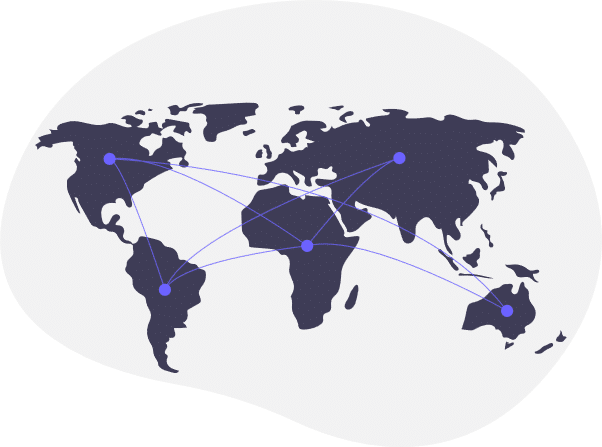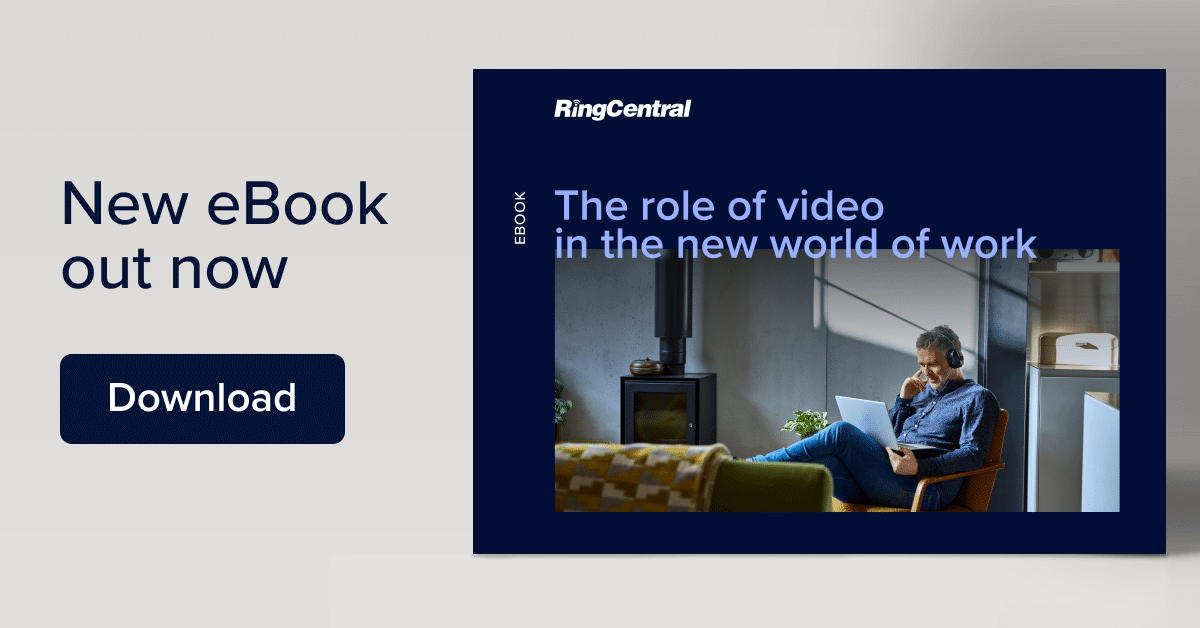Web Conferencing vs Video Conferencing
Video and web conferencing both use a camera-capture image as the visual component alongside an audio component. This is the only thing they have in common.
Web conferencing allows someone to give a presentation over the web to people spread out all over the world. It usually operates over your computer or laptop and is software-based. The presenter isn’t very interactive, and participants can communicate using whiteboards, desktop sharing and chat. However, in some instances, the audience will also not interact at all or be in a listen-only status. The audience can see what’s on their screen but aren’t able to make changes or participate.
Video conferencing enables connections between multiple places across the internet at the same time. Video and cameras are used to allow participants to see the presenter and other participants as necessary. To do this, participants need to be able to use video equipment, such as webcams, that connect to a network. This uses more bandwidth than web conferencing.
The most significant differences between the two are the quality of the rendered image and the cost. You really do get what you pay for.

With web conferencing, you frequently get issues with frozen images and pixelation. This is usually due to low bandwidth and limits your interactions. As a result, web conferences can be useful for speeches, webinars, or one-way presentations, but falls short for meetings.
Video conferencing is far better for meetings but usually comes with a higher upfront cost. This is because it usually comes with high definition video, transparent sounds, and an almost lifelike interaction that feels like you’re talking to others face to face.
Choosing between the two comes down to how you want your meetings to feel and how important they are. The more important the meeting, the more likely you are to want an HD video image and higher audio quality that you can only get from video conferencing. Not to mention the level of genuine interaction you can achieve.
Web conferencing allows you to send a one-dimensional message with hardly any interaction and with weaker audio and video quality. Video conferencing, however, provides quality dialogue and high definition real-time video which is wholly reliable across the board.
Why Businesses Prefer Video Conference Calls
There are many reasons why businesses prefer video conferencing to web conferencing and even in-person meetings. Modern businesses are seeking out and using new ways of communication to transform their working practices. This isn’t only to bring their businesses up to speed with modern communication. It is also to ensure they’re communicating effectively and putting processes in place for the future of the modern workforce.
Video conferencing software creates a much more collaborative meeting culture. But it also offers so much more. It’s building the foundations to enable today’s digital workforce. Video meetings allow teams to maintain human connections, no matter where they physically are. This improves their ability to work with people all over the world and speeds up decision making.

Video conferencing also simplifies management and usability. Working teams need to have collaboration solutions that let them communicate through audio conferencing, video conferencing, real-time messaging and screen sharing. But interactions can be complicated by relying on several solutions that don’t work seamlessly together.
However, you can use a consolidated online meeting option with a simple user interface (UI) that is managed centrally. This means that teams can focus on their video chats or meetings rather than having to fight fires, troubleshooting each one.
With today’s workforce prioritising flexibility and mobility over seclusion and private offices, it’s never been more important to rally communication and culture. Bringing remote workers, together with employees in offices, can increase productivity on both sides, and decrease travel costs. Companies that have remote employees, different geographical locations, or just a focus on work-life balance really value the unique portability video conferencing has brought to human connections. It’s never been easier to connect with employees face to face across diverse locations.
Businesses are choosing to upgrade their legacy systems and improve value with full video conferencing solutions. These include video calling, call recording, screen sharing, audio conferencing, instant messaging, file sharing, meeting recording and live streaming.
Companies are moving away from using systems where the total cost of ownership (TCO) is higher due to maintenance and licensing from several providers. Such disparate systems add unnecessary complexity for their users, as well as having higher costs.

Video Connects a Distributed Workforce
For some time now, distributed workforces have become increasingly commonplace. However, COVID-19 drastically increased the number of businesses that enabled their workforces to work remotely – almost overnight, many organisations switched to the remote.
Some of the most widely known businesses in the world have embraced remote working for years. Companies like Amazon and Salesforce have many of their employees working from home using VoIP and video conferencing solutions. As you would expect, businesses are now looking to transfer their employee base to distributed working completely.
Fully remote organisations open up their potential pool of talent to draw from as employees can work from any location. On top of this, existing employees who are looking to live in a different area don’t need to think about switching employers as their location is not crucial to their work.
Video conferencing will allow businesses to move from the Monday to Friday, 9 to 5 standard. They can choose to have their employees working around the business’ core hours and ensure that they have overlap with their colleagues. They can also choose to enhance flexible working hours to suit both the business and those that work for them.
All of this means that businesses will be searching for the most effective and efficient communications solutions that cover cloud collaboration, recorded video, chat, video and audio. Ideally, organisations seek out an all in one collaboration tool that brings these capabilities together in a single interface.

Video Allows for Better Conversations
Good communication is one of the cornerstones for any successful business. But, there are many instances where communication can get in the way of productivity. This is seen mostly where businesses are dependent on legacy systems or traditional conference calls which have limited collaboration features.
Video improves communications regarding instructions or strategy. Features like screen sharing allow employees to integrate video into their meetings so they can share ideas easily.
Facial expressions and body language are vital for good communications. Yet, with traditional conference calls or legacy systems, these are imperceptible and muted. The way that video conferencing allows these to be seen increases productivity and provides an enhanced experience for the users.

Video Keeps Employees Happy
Remote employees are the new norm. Businesses are being pushed into the future with ever-increasing expectations for flexible working. But, they have also been privy to the inefficiencies that have existed with remote working previously.
Video powered conference calls are the best way to address such productivity drags. They enable home-based, remote and travelling employees an easy way to engage and communicate on a day-to-day basis. With the best solutions in place, it doesn’t matter which devices employees use. Many top video conferencing tools offer mobile apps that work on mobile devices running on either Android or iOS.
Employees working on the same project but located miles apart, can dial-in and use video conference calls to coordinate, provide updates and build relationships via unlimited meetings. All of this allows employees to be happy in their everyday working life. They can achieve the same things that they would be able to do in the office while being flexible with their time and movements.
Video calls also help with employee management relationships. Managers can have video-based check-ins with their reporters and can form bonds, assess performance and assist with their workloads incredibly quickly and easily.

Video Creates Better Meetings
Video conference calling facilities enable creative team collaboration. It can be not very easy for some employees to get their visual concepts across when they’re not in person or if they’re using sub-par communication methods. While they may be able to visualise ideas, other attendees won’t have proper insight into what is being described—this stunts collaboration.
Video conference calls will help to solve this problem by allowing employees to share their ideas or workshop concepts in real-time using professional tools. For example, an architect could use a building model platform, or a designer might share their screen, showing them using a drawing programme. This is essential for collaborative team meetings.

Video Saves Time and Money
It’s clear how much video conferencing enables businesses to work towards their digital future. All while still holding onto everything necessary to employee relationships, management, collaboration, efficient ways of working and getting the job done. But how does it save time and money?
Well, it’s obvious. It saves money in almost every area a business could ever wish to. Video conferencing has advanced so much already and is only improving. Now, there is very little need for any other team collaboration tools. If you find the right software, businesses rarely have to splash out on any other communication or collaboration systems. Meaning everything your employees need to communicate is in one place. Pricing for such solutions, too, is often customisable to a business’s needs.
A single place for all communications allows your employees to work anywhere and at any time. This widens the pool for potential talent, meaning you will be paying for the very best people who will do the best job. On top of this, businesses can employ workers in locations that are more time and cost-productive.

For example, employing people in different countries to serve a variety of customers. They won’t need to be paid to work at odd hours due to time zones, they won’t need to travel to interact face to face, and they will already speak the language.
Finally, businesses can now run without having to rent or purchase enough space to accommodate their workforce and all the ‘things’ that come with that. They already have less need for storage space, after all, thanks to the rise of secure cloud storage. Office footprints get smaller, and with this comes one of the most significant reductions in costs a business can take advantage of.
Employees are also happier than their work now revolves around them as this means less commuting, increased flexibility and less workplace distraction. Businesses embracing home working are likely to see a reduction in employee turnover and an increase in engagement.
However, free video conferencing solutions like Google Hangouts, FaceTime, or Skype just won’t cut it. This is why video conferencing software is imperative to workplace communication. Businesses want the benefits of employees working together as if they were in an office, but without the negatives of cost and inefficiency. Collaborative video conferencing is perfect for this.
Important Trends in Video Conferencing Apps
1. User Experience
As has been outlined so far, video conferencing can provide measurable, significant benefits to businesses and their employees. But, not all video conferencing solutions are the same. To ensure they get the most out of video conferencing, companies need to choose their tools wisely. They need to make sure that they’re matching the right technology to their business and employee needs. That means thinking about practicalities like whether most staff have Macs or if they have Windows laptops and use Chrome as their default web browser.
Choosing the right tools is vital to make sure that employees, and therefore the business, benefit from the technology. And that costs or potential pitfalls are kept to a minimum. Companies need to find video systems that are easy to use, require minimal support, integrate with existing communications and are low maintenance.
For employees, using video conferencing apps needs to be as simple as making a phone call or sending a text or email. They don’t want to be tied up with time limits or technicalities.

2. Mobility
Today’s employees, and the employees of the future, are highly mobile and increasingly flexible in the way they choose to work. They are just as likely to be working on a train as they are at an airport or home. For them to fully participate in and embrace video collaboration within a business, these employees need to be able to access technology from multiple, variable, devices and networks.
Employees want to be able to access their work from PCs, smartphones, notebooks, laptops and tablets. And they want to be doing this through a variety of networks with varying levels of bandwidth availability.
Some users will be able and willing to join a video conference from a conference room designed to maximise performance with a strong corporate network. As businesses look to extend video capabilities to all their employees, though, they need to make sure they will work on any devices and for wherever they are – including public networks or private LANs.
Further, the conferencing software will need to be able to handle the network traffic as more and more employees use video calls while delivering the best possible performance for any given device in any given environment.

3. Flexibility
The new normal for most organisations is unified communications. The ideal is the full integration of all communication across the business. Things like voice, instant messaging, email, audio, and social media, as well as web and video conferencing. This gives users a single interface that they can use to interact with the business in whatever way is necessary.
The more advanced unified communication deployments are now starting to integrate communications tools with other productivity and business apps. This improves business processes and increases productivity and usage.
Therefore, businesses are looking for video conferencing solutions that integrate easily with their own common communication platforms, such as Microsoft or IBM. They are also looking for systems that they can use interoperably, so video conferencing apps from different providers that can connect seamlessly.
This sort of software flexibility is paving the way for the future. In this day and age, people want to be able to connect with others as quickly and effectively as possible. In the business world, this means their technology needs to be able to do the same.

4. Security
Security is vital to video conference calls, especially in a business setting. During video conferences, sensitive data and information will travel through internal and external networks where it can be vulnerable to hackers. If a network were to fall victim to those hackers, video conference streams would become the hacker’s surveillance camera that can be recording and distributing this information and data.
Another type of cyber attack that can occur during a video conference is ‘meeting bombing’ – sometimes also known as ‘Zoom bombing’ due to Zoom meetings’ particular susceptibility. This is where an uninvited guest manages to join a video meeting to either listen in or disrupt the meeting. ‘Meeting bombing’ can happen when meetings don’t require a password or the attacker can guess the ID.
There are many more examples of cyber attacks that can target video conferencing, such as malicious links in chat, stolen meeting links, data shared with third parties, and malware or zero-day attacks. Businesses must choose video conferencing apps that minimise these risks.

The Future is in Video
Video conferencing has evolved from the legacy systems of yesteryear to the forward-thinking video conferencing apps of the future with extraordinary functionality. Now, employees and co-workers at both large and small businesses can make video calls from anywhere and at any time.
The future of video conferencing promises to be more reliable, higher quality, and fully immersive with integration technology. Different video conferencing vendors are working to make their apps stand out by offering capabilities and features that increase the productivity of meetings.
Some are using AI for things like real-time transcription and translations. Other features, such as the ability to share short video clips, integrations with other business applications, and new and improved ways to enhance team collaboration, are also on the horizon.
Alongside all of this, the future holds increased and improved analytics that will evolve to look at more than just the system’s performance. It will also provide insight into the effectiveness of meetings. They will measure productivity by tracking the participants on a call, how often they talk, and how they’re using physical and virtual meeting rooms.
The future for businesses is all about productivity. So, the future of video conferencing is all about productivity. From flexible room systems to AI-driven features, video services are now and will continue to be, all about making businesses more collaborative and efficient.

Originally published Dec 02, 2020, updated Jan 16, 2023
